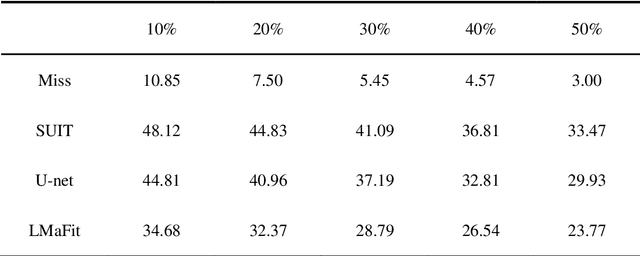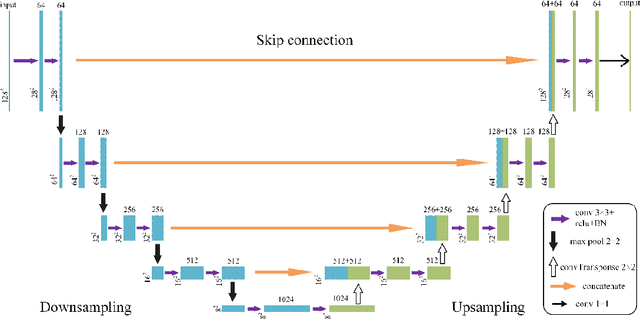Lihua Fu
IncepFormer: Efficient Inception Transformer with Pyramid Pooling for Semantic Segmentation
Dec 06, 2022Abstract:Semantic segmentation usually benefits from global contexts, fine localisation information, multi-scale features, etc. To advance Transformer-based segmenters with these aspects, we present a simple yet powerful semantic segmentation architecture, termed as IncepFormer. IncepFormer has two critical contributions as following. First, it introduces a novel pyramid structured Transformer encoder which harvests global context and fine localisation features simultaneously. These features are concatenated and fed into a convolution layer for final per-pixel prediction. Second, IncepFormer integrates an Inception-like architecture with depth-wise convolutions, and a light-weight feed-forward module in each self-attention layer, efficiently obtaining rich local multi-scale object features. Extensive experiments on five benchmarks show that our IncepFormer is superior to state-of-the-art methods in both accuracy and speed, e.g., 1) our IncepFormer-S achieves 47.7% mIoU on ADE20K which outperforms the existing best method by 1% while only costs half parameters and fewer FLOPs. 2) Our IncepFormer-B finally achieves 82.0% mIoU on Cityscapes dataset with 39.6M parameters. Code is available:github.com/shendu0321/IncepFormer.
Deep-seismic-prior-based reconstruction of seismic data using convolutional neural networks
Nov 20, 2019



Abstract:Reconstruction of seismic data with missing traces is a long-standing issue in seismic data processing. In recent years, rank reduction operations are being commonly utilized to overcome this problem, which require the rank of seismic data to be a prior. However, the rank of field data is unknown; usually it requires much time to manually adjust the rank and just obtain an approximated rank. Methods based on deep learning require very large datasets for training; however acquiring large datasets is difficult owing to physical or financial constraints in practice. Therefore, in this work, we developed a novel method based on unsupervised learning using the intrinsic properties of a convolutional neural network known as U-net, without training datasets. Only one undersampled seismic data was needed, and the deep seismic prior of input data could be exploited by the network itself, thus making the reconstruction convenient. Furthermore, this method can handle both irregular and regular seismic data. Synthetic and field data were tested to assess the performance of the proposed algorithm (DSPRecon algorithm); the advantages of using our method were evaluated by comparing it with the singular spectrum analysis (SSA) method for irregular data reconstruction and de-aliased Cadzow method for regular data reconstruction. Experimental results showed that our method provided better reconstruction performance than the SSA or Cadzow methods. The recovered signal-to-noise ratios (SNRs) were 32.68 dB and 19.11 dB for the DSPRecon and SSA algorithms, respectively. Those for the DSPRecon and Cadzow methods were 35.91 dB and 15.32 dB, respectively.
Seismic data interpolation based on U-net with texture loss
Nov 11, 2019



Abstract:Missing traces in acquired seismic data is a common occurrence during the collection of seismic data. Deep neural network (DNN) has shown considerable promise in restoring incomplete seismic data. However, several DNN-based approaches ignore the specific characteristics of seismic data itself, and only focus on reducing the difference between the recovered and the original signals. In this study, a novel Seismic U-net InterpolaTor (SUIT) is proposed to preserve the seismic texture information while reconstructing the missing traces. Aside from minimizing the reconstruction error, SUIT enhances the texture consistency between the recovery and the original completely seismic data, by designing a pre-trained U-Net to extract the texture information. The experiments show that our method outperforms the classic state-of-art methods in terms of robustness.
 Add to Chrome
Add to Chrome Add to Firefox
Add to Firefox Add to Edge
Add to Edge